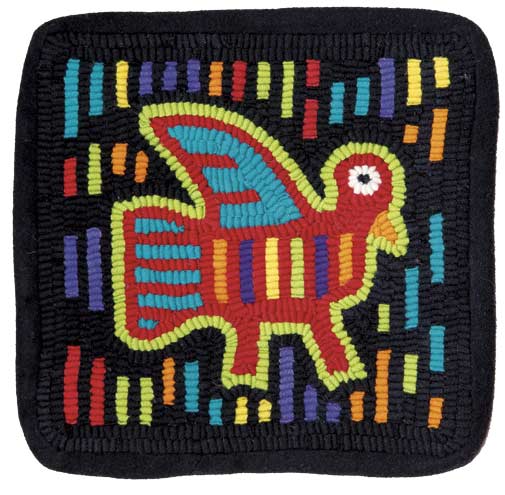Rug Hooking
Hook A Mola!
If you love bright colours and want to have fun, why not hook a “mola”? Molas are colourful panels that include various types of appliqué and often have added embroidery, traditionally made by the Kuna Indians.
The Kuna Indians live in palm-thatched wooden huts with sand floors. The men work in their fields on the mainland or tend coconut plantations or go fishing. The women perform their daily chores, fetching water bucket by bucket, feeding the family pig and sewing molas.
The history of the mola and the process of creating a mola are explained in detail in the adjacent article, but if you wanted to hook a mola, you need not bother with the order of the intricate process. Just use very bright, vibrant hues, especially the primary and secondary colours, and aim for strong contrast. Some molas have almost an “op-art” effect! Nowadays, some pastel colours are used so the sky’s the limit! Solid colours are mostly used and there is absolutely no shading!
To see pictures on the internet I googled “molas” and was rewarded with hundreds of sites. I have now assembled a small library of books.
Molas, as we know them, are colourful panels that include various types of appliqué and often have added embroidery. The word “mola” means “clothing” in the Kuna language. They are traditionally made by the Kuna (sometimes spelled “Cuna”) Indians of the San Blas islands and mainland coast of Panama. Each panel adorns the front and back of a woman’s blouse.
Read more in our Summer 2012 issue.
Designed by Iris Simpson
Ontario Hooking Craft Guild
[email protected]





